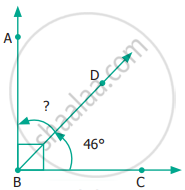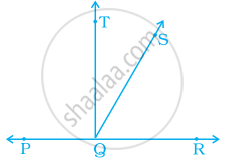Advertisements
Advertisements
Question
One obtuse angle and one acute angle can make a pair of complementary angles.
Options
True
False
Solution
This statement is False.
Explanation:
As two acute angles can make a pair of complementary angles.
APPEARS IN
RELATED QUESTIONS
If two angles are complementary, then the sum of their measures is _______.
The measure of the angle is given below. Write the measure of the complementary angle.
45°
The measure of the angle is given below. Write the measure of the complementary angle.
x°
What is the measure of the complement of the following angles?
65º
The difference in the measures of two complementary angles is 12o. Find the measures of the angles.
Find the complementary angle of 26°
Find the supplementary/complementary angle
From the figure given below, classify the following pair of angles into complementary and non complementary
The drawings below (Figure), show angles formed by the goalposts at different positions of a football player. The greater the angle, the better chance the player has of scoring a goal. For example, the player has a better chance of scoring a goal from Position A than from Position B.
In Parts (a) and (b) given below it may help to trace the diagrams and draw and measure angles.
- Seven football players are practising their kicks. They are lined up in a straight line in front of the goalpost [Figure]. Which player has the best (the greatest) kicking angle?
- Now the players are lined up as shown in figure. Which player has the best kicking angle?
- Estimate atleast two situations such that the angles formed by different positions of two players are complement to each other.
In the given figure, P, Q and R are collinear points and TQ ⊥ PR, name; pair of complementary angles.




